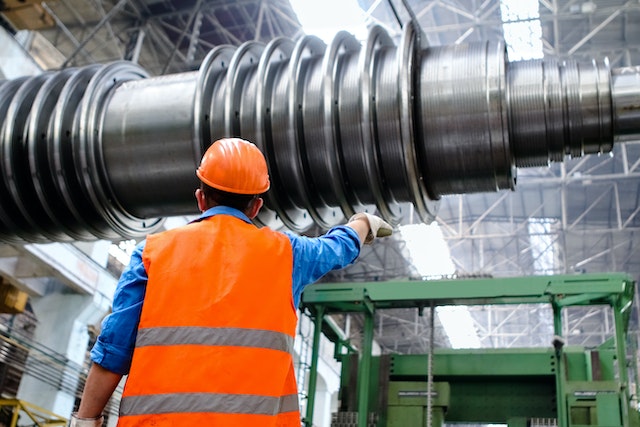The electrical equipment manufacturing industry is a crucial sector that plays a vital role in powering the modern world. From household appliances to industrial machinery, electrical equipment manufacturers produce the devices and systems that keep our daily lives running smoothly. However, the nature of this industry also presents several health and safety risks for the individuals working in it.
This article will discuss some common health and safety risks that those in the electrical equipment manufacturing industry should be aware of.
#1 Electrical Hazards
One of the most obvious and dangerous risks in the electrical equipment manufacturing industry is exposure to electrical hazards. Workers in this field are always close to high-voltage electrical systems and components. This makes the risk of electrical shock a constant concern.
According to WebMD, electrical shocks can lead to severe injuries. These include burns, internal organ damage, and even death. Thus comes the need for workers from this industry to be extra cautious.
Wearing appropriate personal protective equipment (PPE) should be mandatory for electrical equipment manufacturing workers. From insulating gloves to safety goggles, their work daily uniform should include them all. Employers must ensure that all electrical equipment is properly grounded and maintained.
Employees must also be thoroughly trained on safe operation and maintenance approaches of electrical systems and equipment.
#2 Chemical Exposures
The electrical equipment manufacturing process often involves the use of various chemicals, including solvents, adhesives, and lubricants. Exposure to these chemicals can pose serious health risks, as many of them are toxic and may lead to short-term or long-term health problems.
For instance, inhalation of fumes from solvents can lead to respiratory issues. On the other hand, contact with certain chemicals can cause skin irritation or burns.
Also, according to TorHoerman Law, workers need to be aware of exposure to synthetic chemicals like polychlorinated biphenyl (PCB). PCBs are widely used in the electrical manufacturing industry. Exposure to these chemicals can lead to various health problems including cancer.
Common PCB exposure symptoms include skin issues, coughing and shortness of breath, headaches, fatigue, endocrine system disruption, etc. To mitigate such chemical exposure risks, it is essential to implement proper handling and storage procedures.
Employees must use chemical-resistant gloves and eyewear, and maintain a well-ventilated work environment. Hazardous chemicals should be clearly labeled and stored in designated areas.
#3 Noise Pollution
The machinery used in electrical equipment manufacturing often produces significant noise levels. According to Healthline, this can result in noise-induced hearing loss and other health problems if not adequately managed. Prolonged exposure to high noise levels can lead to irreversible hearing damage, in addition to causing stress and fatigue among workers.
In cases where excessive noise levels are identified, engineering controls such as soundproofing and noise-reducing materials should be employed. Workers should also be provided with hearing protection, like earplugs or earmuffs.
#4 Mechanical Hazards
Working with heavy machinery and equipment is an inherent part of electrical equipment manufacturing. These machines can pose a variety of mechanical hazards, including crushing, entanglement, and laceration risks. Accidents involving machinery can result in severe injuries, including amputations and fractures.
To minimize mechanical hazards, it’s essential to maintain equipment properly and perform regular safety checks. Workers should also receive comprehensive training on the safe operation of machinery, as well as the importance of using proper lockout procedures. This can help prevent accidental starts or releases of energy during maintenance activities.
#5 Ergonomic Risks
According to EHS Today, the repetitive and physically demanding nature of many tasks in the manufacturing industry can lead to ergonomic risks. Poor ergonomics can result in musculoskeletal disorders, such as back pain, carpal tunnel syndrome, and tendonitis.
To mitigate ergonomic risks, employers should design workstations that promote proper body mechanics and ergonomics. This may involve providing adjustable seating, work surfaces, and tools. Ergonomic assessments can help identify areas in need of improvement and reduce the likelihood of work-related injuries.
#6 Fire and Explosion Hazards
The electrical equipment manufacturing industry often involves the use of flammable materials, such as coatings and adhesives. Besides, the presence of electrical systems can also generate sparks. These factors can create a significant risk of fires and explosions. The consequences of such incidents can be catastrophic, causing injury, loss of life, and substantial property damage.
To address fire and explosion hazards, it is essential to implement stringent fire safety measures. This includes things like the installation of fire suppression systems, adequate ventilation, and the use of flame-resistant materials in the manufacturing process.
Employees should be educated on fire safety procedures and evacuation plans. Regular fire drills can help ensure that everyone knows how to respond in case of an emergency.
Conclusion
The risks in the electrical equipment manufacturing industry will always be there. That of course, doesn’t mean that people will stop working in this sector. With a bit of caution from both employers and employees, workers in this industry can enjoy a safe working environment. That, in turn, will help minimize the risks the electrical equipment manufacturing industry poses to its workers.










